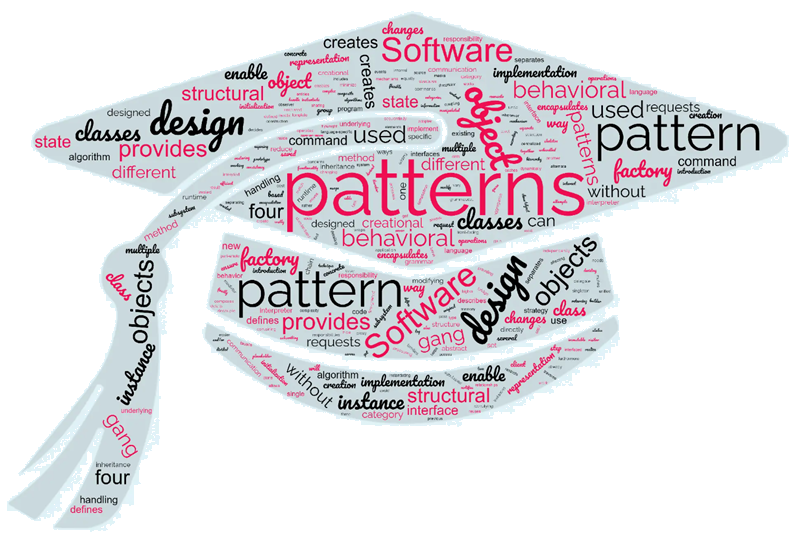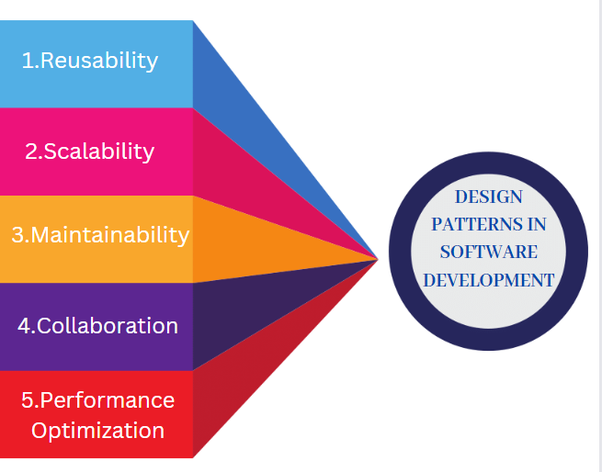Intro to Design Patterns
Overview
Design patterns in software engineering are recurring solutions to common design problems encountered during software development. They encapsulate best practices and proven solutions that have been refined over time by experienced developers. By applying design patterns, developers can effectively address design challenges, promote code maintainability, and improve the overall quality of software systems.
History of Design Patterns
Origins in Architecture: Design patterns have their roots in Christopher Alexander’s work on architectural patterns in the 1970s, where he identified recurring solutions to common design problems in buildings and urban planning.
Adoption in Software Engineering: In the 1980s and 1990s, the concept of design patterns was popularized in software engineering by the “Gang of Four” (Erich Gamma, Richard Helm, Ralph Johnson, and John Vlissides) in their seminal book “Design Patterns: Elements of Reusable Object-Oriented Software” published in 1994.
Standardization Efforts: Following the publication of the Gang of Four book, design patterns became a standard approach in software development. The need for a common language and understanding of design patterns led to their formalization and documentation.
Evolution and Expansion: As software development evolved, so did design patterns. New patterns emerged to address specific challenges in different domains, such as enterprise applications, distributed systems, and user interfaces.
Integration with Software Methodologies: Design patterns became integrated into various software development methodologies, such as agile and iterative approaches, providing developers with proven solutions to recurring design problems.
Continued Relevance and Adoption: Despite changes in technology and programming paradigms, design patterns remain relevant today. They serve as a foundation for good software design, promoting code reuse, maintainability, and scalability.
Design patterns originated from architectural principles and were adapted to software engineering by the “Gang of Four” in the 1990s. Since then, they have evolved, been standardized, and integrated into various software methodologies, continuing to play a crucial role in promoting best practices and facilitating the development of high-quality software systems.
What is a Pattern?
Recurring Solution: A pattern is a recurring solution to a common problem that arises within a specific context or domain.
Generalized Form: It represents an abstracted, generalized form of a solution that can be applied to various instances of the same problem.
Documented Form: Patterns are typically documented in a structured format, including descriptions, examples, and guidelines for implementation.
Proven Practices: They embody proven practices and collective wisdom distilled from the experience of experts in a particular field.
Reusable Component: Patterns serve as reusable components that can be adapted and integrated into different software systems to address similar design challenges.
Language for Communication: Patterns provide a common language for communication among software developers, enabling them to effectively discuss and convey design solutions.
A pattern in software engineering is a recurring, abstracted solution to a common problem, documented with descriptions and examples. These solutions, derived from collective experience, serve as reusable components and facilitate effective communication among developers, contributing to the overall quality and maintainability of software systems.
What Constitutes a Design Pattern?
Problem Statement: A design pattern begins with a clear identification of a recurring problem in a specific context or domain within software development.
Solution: It provides a general, reusable solution to the identified problem, often presented in a structured format with guidelines and examples.
Context: A design pattern defines the context in which it applies, including the conditions under which the problem occurs and the constraints affecting its solution.
Consequences: Design patterns also outline the trade-offs and consequences associated with applying the pattern, helping developers understand its implications.
A design pattern comprises a problem statement, a reusable solution, context specifications, and an understanding of the consequences of its application. It serves as a blueprint for addressing recurring design challenges in software development, providing a structured approach to problem-solving within specific contexts.
What Makes a Design Pattern Good?
Effectiveness: A good design pattern effectively solves the identified problem while promoting desirable software qualities such as flexibility, scalability, and maintainability.
Flexibility: It should be flexible enough to adapt to various scenarios and accommodate changes in requirements or technology without requiring significant modifications.
Ease of Understanding: A good design pattern is easy to understand, with clear documentation, examples, and rationale, making it accessible to developers of varying experience levels.
Reusability: It should encourage code reuse by providing a solution that can be applied across different projects and contexts, thereby saving time and effort in development.
Testability and Maintainability: A good design pattern promotes testability and maintainability by encouraging modular, well-structured code that is easier to debug, test, and enhance.
Community Acceptance: Finally, a good design pattern is recognized and accepted within the software development community, often validated through widespread adoption and positive feedback from practitioners.
A good design pattern effectively addresses a recurring problem in software development, is flexible, easy to understand, encourages reuse, promotes testability and maintainability, and enjoys acceptance within the software development community.



